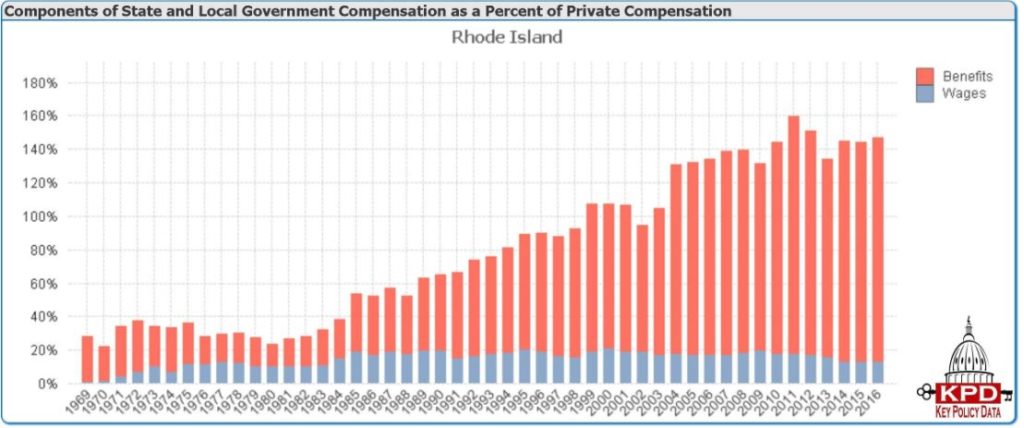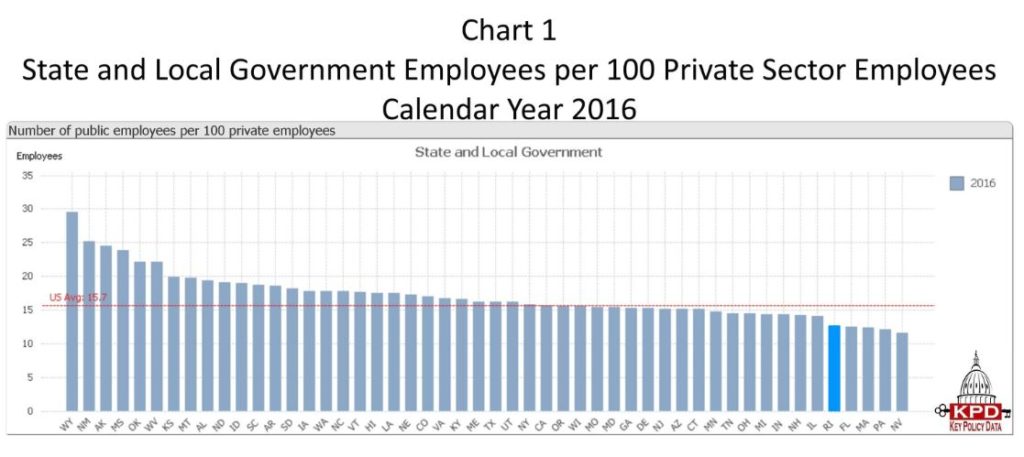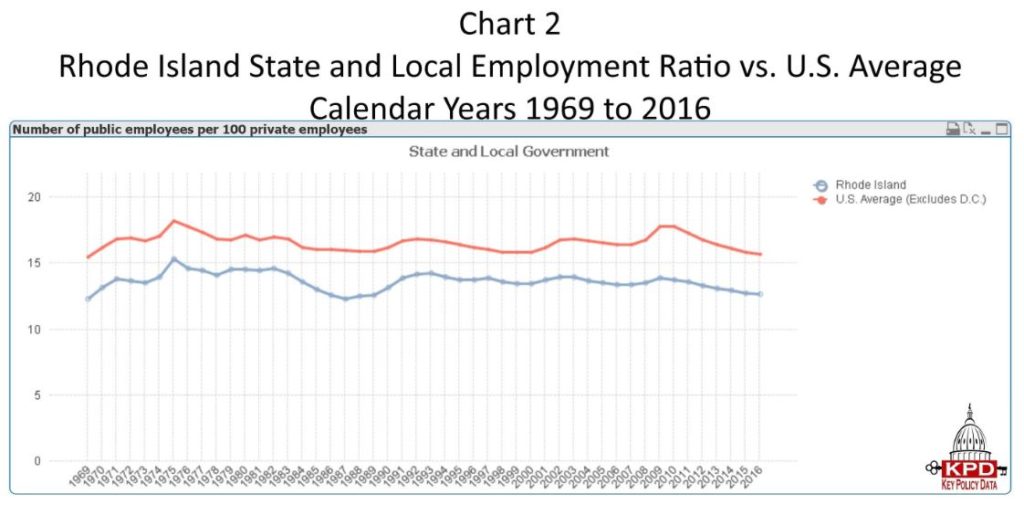PROVIDENCE – Rhode Island was the sixth-least productive government workforce in the United States when comparing government and national employment and compensation numbers in 2016, according to Key Policy Data.
The study showed that Rhode Island state and local government compensation was dominated by benefit pay, but also showed that the government employment remained smaller than most states when compared to its private sector, and that it has been reducing that ratio for several years.
The study examined state and local government employment data in relation to private-sector data in each state. However, the study compared state and local government compensation based on the national average private-sector compensation, not accounting for cost of living, or regional employment data and wages.
Rhode Island routinely ranks in the top 10 for highest cost of living in the nation.
Despite this skew, the study highlights two major aspects of the government workforce, the number of employees as a percentage of private-sector jobs, and compensation as a percentage of private-sector compensation, and tracked these trends.
Rhode Island had the third-highest local and government compensation compared to national private-sector compensation in 2016. Rhode Island state and local compensation was 33 percent higher than the private sector. The national government compensation average was 13.5 percent above private-sector compensation.
More importantly, the Rhode Island’s state and local compensation ratio difference to the national average increased by 30 percentage points to 33 percent in 2016 since 1969. According to KPD, “this is a significantly faster growth rate than the national average, which increased by 15 percentage points to 14 percent in 2016 from -1 percent in 1969.”
Much of Rhode Island’s compensation gap and growth in compensation gap has to do with benefits. Rhode Island Employees earned 134 percent more than the national private sector, 5 percentage points higher than the national government employee average of 127 percent above the private-sector average. Rhode Island’s benefit ratio was the ninth highest in the country.

State employees earn wages that are 13 percent higher than national average private-sector employee, which is the highest wages and salary ratio in the country. The national average is -8 percent.
The report also showed that Rhode Island had the fifth-lowest state and local government employment ratio in the country, with 12.6 government employees per 100 employed private-sector employees. The national average was 15.7 government employees to 100 private-sector employees.

It also showed that over time, Rhode Island’s government vs private employees declined in the last several years:

Chris Bergenheim is the PBN web editor.











